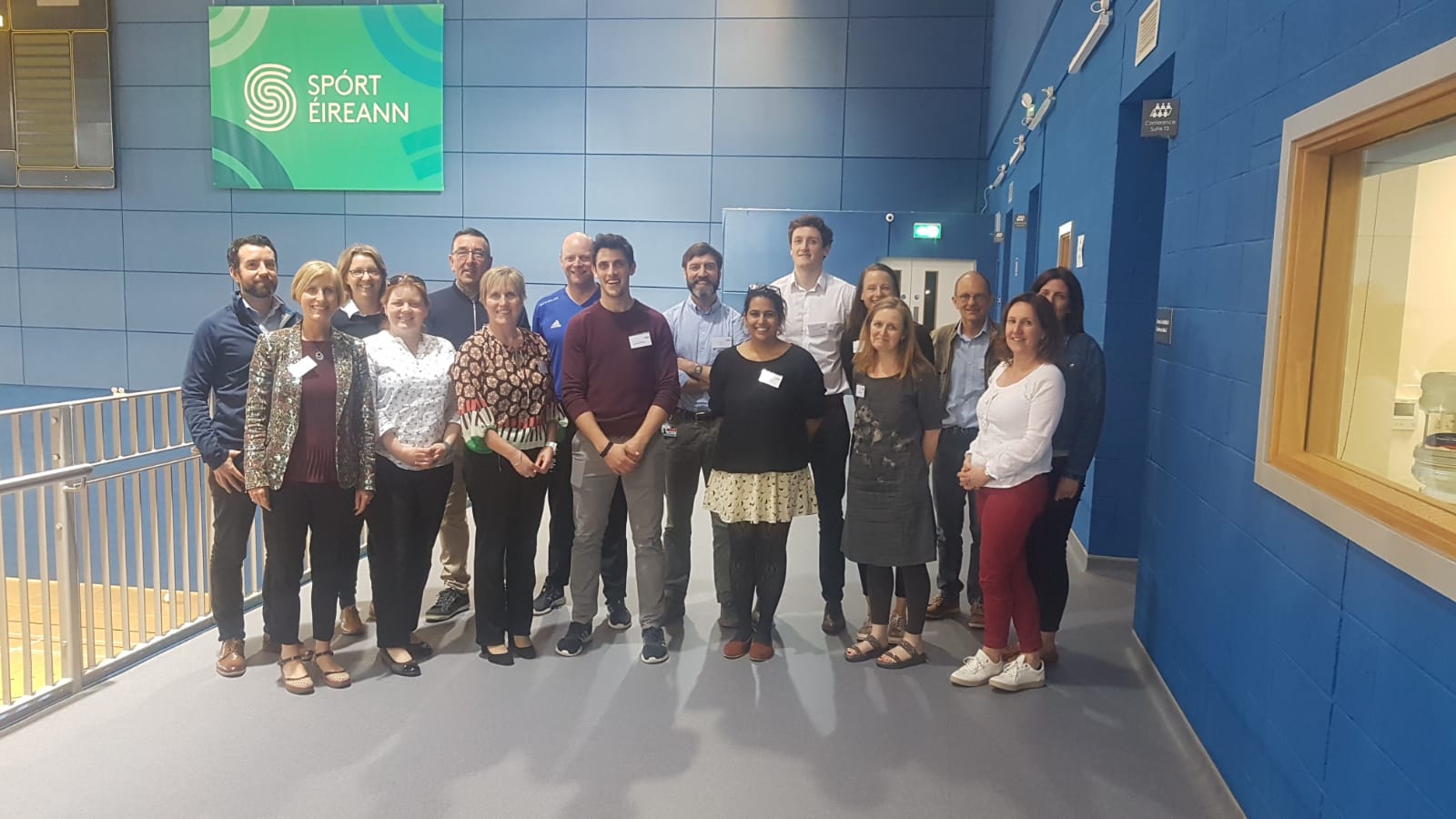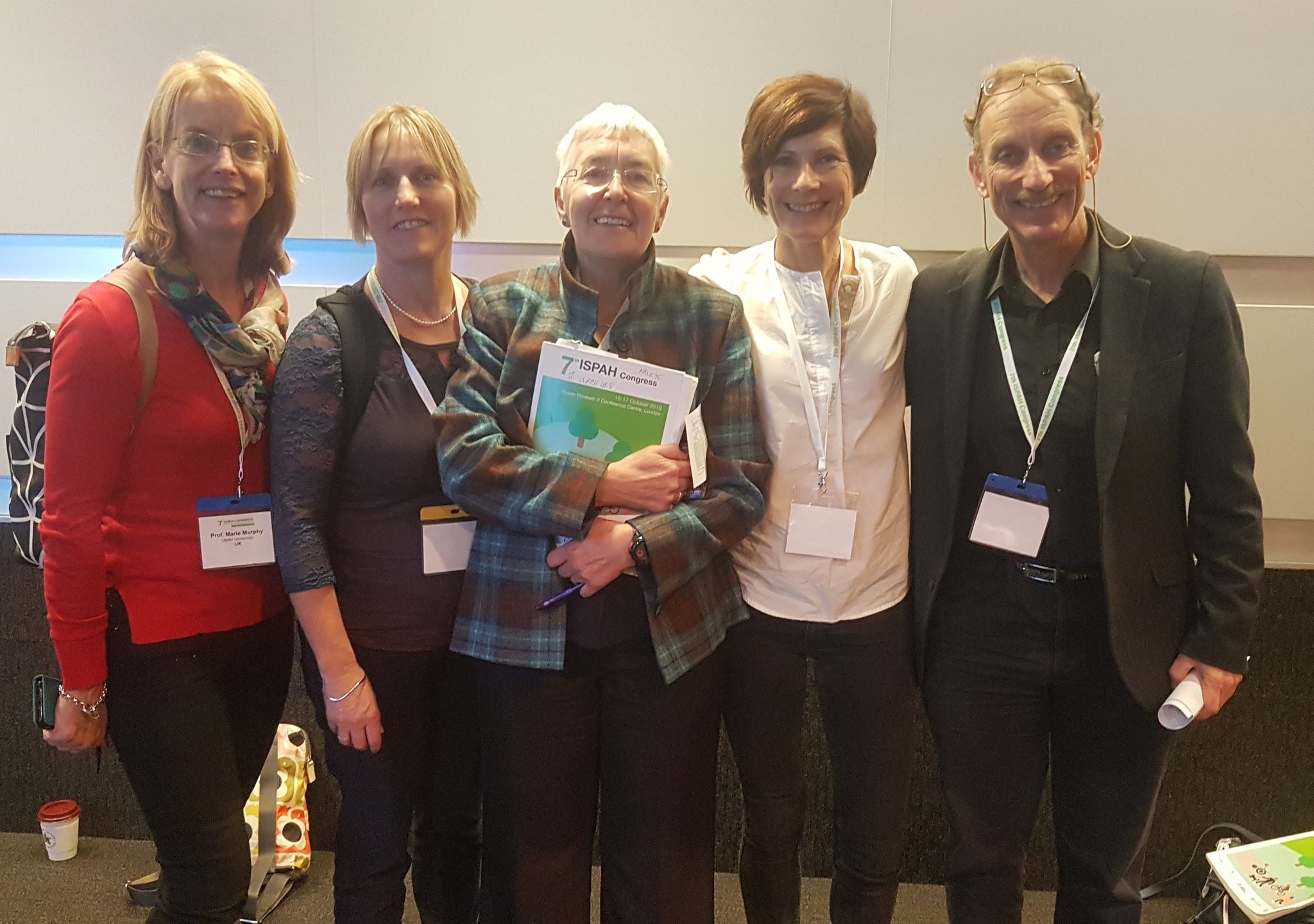Physical Activity and Women’s Health

Thank you to Dr. Fiona Mansergh (Healthy Ireland, Department of Health) for contributing the following blog.
Inactivity is one of the four major risk factors for chronic disease, along with smoking, excessive alcohol consumption and obesity. Conversely, physical activity has huge benefits.
In the short term, physical activity can improve mood and feelings of wellbeing and works to improve brain function and learning as well as improving muscle strength and fitness. There is also the long-term element of disease prevention; physical activity reduces the risk of cancer, osteoporosis, frailty, obesity, cardiovascular and respiratory diseases, high blood pressure and many other non-communicable diseases that increase in prevalence with age.
We need to work to keep as many people as active as possible for as long as possible in their lives in order to maximise the years in which people have good quality of life and good health and wellbeing. For these reasons and others, national policy aims to increase participation in sport and physical activity and the proportions meeting the National Physical Activity Guidelines by 1% per annum.
Survey Data and the Gender Gap
It is clear from Survey data from multiple sources that women and girls are less active than men.

When taking overall activity levels into account, there is a gender gap at all age groups[1],[2], although, when looking at sports and leisure activity alone, women between the ages of 35 and 65 are more active than men of the same age[3].
There is an encouraging increase in the proportion of people meeting or exceeding the National Physical Activity Guidelines (30 minutes of moderate to vigorous physical activity, 5 times per week); this figure is now at 46%. However, only 38% of women are meeting these Guidelines, and the number of children meeting their Guidelines (one hour of moderate to vigorous physical activity, 7 days per week) has declined marginally since 2010, with a wide gender gap between boys and girls.
Narrowing the Gender Gap; Policy Supports
Increasing population physical activity levels and narrowing the gender gap in sport and physical activity participation is a Government policy focus at a number of different levels.
Physical activity is a core element of the Healthy Ireland Framework[4], our national blueprint for improving the health and wellbeing of the nation. The National Physical Activity Plan (NPAP)[5], published in 2016, is a core element of the Healthy Ireland Framework. Its implementation is being led by the Departments of Health and Transport, Tourism and Sport, with the Implementation Group also including representation from the Departments of Education and Skills, Children and Youth Affairs, Housing, Planning and Local Government and Rural and Community Development. The HSE, Sport Ireland, Federation of Irish Sport and the university and research sector are also represented.
The NPAP Implementation Group is supported by Research and Children’s Sub-Groups and by I-PARC. It is due to be reviewed and then renewed after 2020. A renewed or refreshed policy will include a focus on inequality, as mandated by the Healthy Ireland Framework, including inequalities arising from gender.
A new Women’s Health Taskforce[6] has been established by the Department of Health to improve women’s health outcomes and experiences of healthcare. It met for the first time in September 2019 and is tackling a wide range of issues impacting on women’s health. To support the work of the Taskforce, the Department has also published Women’s Health in Ireland[7], a review focusing on how best to support women’s specific health needs. Among other items, the Taskforce is currently focusing on the health benefits of physical activity. Taskforce findings will inform future policy developments in this area, including renewal of the National Physical Activity Plan.

A number of actions in the National Strategy for Women and Girls, 2017-2020[8], relate to enhancing women’s visibility and participation in sport. Addressing women’s participation at all levels in sport is also identified as an important element of the National Sports Policy, 2018-2027[9].
Measures include elimination of the sport participation gradient between men and women, the setting of gender diversity targets and development of equality action plans by National Governing Bodies of Sport and training programmes for women, including governance-related and technical training (coaching, refereeing and team management).
Sport Ireland’s vision for women in sport is one where women have an equal opportunity to achieve their full potential, while enjoying a lifelong involvement in sport. The Women in Sport Policy[10] expresses Sport Ireland’s commitment to women in sport, building on the significant work already undertaken in this area, providing a blueprint for Sport Ireland’s future work and aligning with the commitments included in the National Sports Policy.
The Federation of Irish Sport’s 20×20 campaign[11], If she can’t see it, she can’t be it aims to create a measurable cultural shift in the presentation and perception of Women’s sport in Ireland. It is a broad-based approach with three key metrics; to boost media coverage, attendance at key events and participation.

The Department of Education and Skills (DES) has implemented a number of important changes in recent years. These include the introduction of the Junior Cycle Wellbeing curriculum (which includes Physical Education (PE)) and the new Leaving Certificate PE and Senior Cycle PE curricula for those not taking PE as an examinable subject. DES has also recently published the Wellbeing Policy Statement and Framework for Practice, 2018-2023[12], and, through the NCCA, has launched a public consultation on a new primary curriculum framework[13]. Wellbeing, including PE and physical activity, is included as a specific area under the proposed Framework.
The Active School Flag (ASF) programme[14], jointly sponsored by DES and Healthy Ireland, is going from strength to strength. Active School Flag aims to get more schools more active more often. The ASF programme is a key intervention that builds healthy behaviours in school children by increasing customary levels of physical activity and therefore reducing obesity levels. Furthermore, there is a substantial body of evidence that demonstrates improved levels of focus and discipline amongst school children, resulting from increased activity levels during the school day, which lead to better academic outcomes.
As of January 2020, 851 primary schools hold current Flags and 1,686 have engaged with the programme since inception. Meanwhile, the ASF is currently piloting a post-primary model with 6 secondary schools nationwide. By increasing the numbers of schools engaging with ASF and putting measures in place to energise the school day, more children and young people will be enabled to achieve 60 minutes of activity per day and sedentary time will be reduced for all. The CSPPA 2018 Study found no significant gender gaps in physical activity participation in schools with Active School Flags, suggesting that this programme might be effective in levelling participation gradients
Summary
The aim of current policy and implementation is to increase population participation levels and reduce the proportion of the population that is insufficiently active. This cohort of the population contains proportionally more women than men.
Women have lower levels of activity and are more likely to have onerous family and caring responsibilities. For over forties, there are increasing pressures on time, particularly for those with growing families and caring responsibilities for older and/or disabled relatives.
There are also general pressures contributing to population inactivity; time poverty, IT usage, full employment and long commute times, the cost of housing and the increasing availability of sedentary forms of both work and entertainment.
However, it is vital to stay active, to slow the ageing process, reduce disease risk and show a great example to children. Maintaining activity levels as we age can really reduce the risk of frailty and chronic disease.
This may be particularly relevant to women; there are a number of disorders such as osteoporosis, frailty, asthma, depression and anxiety that are more prevalent in older women and which can be ameliorated by higher activity levels. Physical activity has also been shown to help with symptoms of the menopause.
It is important to live with good quality of life for as long as possible. Our vision is to remove the barriers to activity and to provide more options for people to be active and to maintain their health for longer.
To name but a few options, we look forward to increasing opportunities to engage in community sport, improving infrastructure for active transport, increasing the numbers of Greenways, Blueways and other recreational trails, increasing the numbers of active schools, tackling inequalities in sport and physical activity, and further working towards improved physical activity pathways in healthcare.
There are many options to be more active, no one plan fits all!
COVID-19
It should be noted that the policy areas discussed above are subject to delays in progression as a result of emergency measures being taken to manage the COVID-19 pandemic
References to further documents
[1] Healthy Ireland Survey, 2019: https://www.gov.ie/en/collection/231c02-healthy-ireland-survey-wave/
[2] Children’s Sport and Physical Activity Study, 2018: https://www.sportireland.ie/research/csppa-2018
[3] Irish Sports Monitor, 2017: https://assets.gov.ie/16014/3abf58a4a5af41b9ab66065de65e15a3.pdf
[4] Healthy Ireland Framework: https://www.gov.ie/en/publication/e8f9b1-healthy-ireland-framework-2019-2025/
[5] National Physical Activity Plan: https://www.gov.ie/en/policy-information/b60202-national-physical-activity/
[6] Women’s Health Taskforce: https://www.gov.ie/en/campaigns/-womens-health/
[7] Women’s Health in Ireland: https://s3-eu-west-1.amazonaws.com/govieassets/34221/1896ea11479242e09073d5c78098dff4.pdf
[8] NSWG: http://justice.ie/en/JELR/National_Strategy_for_Women_and_Girls_2017_-_2020.pdf/Files/National_Strategy_for_Women_and_Girls_2017_-_2020.pdf
[9] National Sports Policy: https://www.gov.ie/en/publication/aaa7d9-national-sports-policy-2018-2027/
[10] Women in Sport Policy: https://www.sportireland.ie/women-in-sport/women-in-sport-policy
[11] 20@20: https://20×20.ie/
[12] Wellbeing Policy Statement and Framework for Practice: https://www.education.ie/en/Publications/Policy-Reports/wellbeing-policy-statement-and-framework-for-practice-2018%E2%80%932023.pdf
[13] NCCA, Primary Curriculum consultation: https://ncca.ie/en/primary/primary-developments/consultation-on-the-draft-primary-curriculum-framework/consultation
[14] Active School Flag: https://activeschoolflag.ie/










